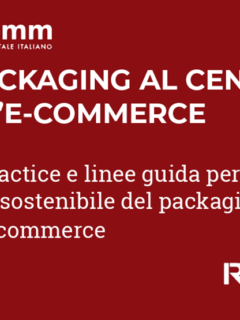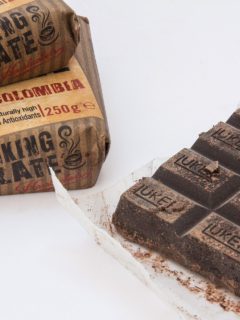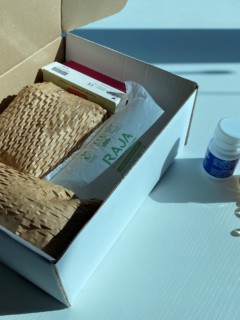Guide to perfect pallet packing
Did you know that the pallet was born during World War II? The credit for this discovery goes to American soldiers who realised that placing goods to be transported on a wooden platform made it easier to move them. The transition from military to civil use was natural; today the pallet has become one of the pillars of international logistics, revolutionising the entire sector. Soon, in fact, logistics operators universally recognised its potential.
The pallet allows goods to be shipped by grouping them into standard-sized load units, considerably reducing breakages and optimising space both in warehouses and inside the trucks transporting them.
Packing a pallet correctly, however, is only apparently a simple operation.
To make a really well-packed pallet it is necessary to take into account a series of tricks to ensure that the packaged goods arrive intact at their destination.
In this guide we would like to give you some useful tips on how to pack pallets perfectly and avoid making mistakes.
Here is a vademecum for packing your pallets:
- Choose the correct type of pallet according to the size of the goods and the type of shipment
- Stack packages evenly, trying to put the larger packages at the bottom and the smaller ones at the top
- Avoid items protruding from the base if possible
- Protect corners with profiles and angle brackets
- Wrap everything carefully with stretch film
- Fasten the goods to the base pallet with strapping
Pallets: how to choose the right one?
The first step is to choose the most suitable pallet for the type of shipment: is it better to use a wooden pallet or plastic pallets?
Which criteria to take into account when choosing the most suitable pallet for your needs:
- Supported load
- Storage conditions
- Type of transport (export)
The different types of pallet
For loads up to 700kg
- Very light: 70% lighter than a wooden pallet
- Safe to handle: no nails, splinters or sharp corners
- Ideal for export: no pesticide treatment required
- 100% natural: recycles like a cardboard box
- Economical
- Stackable
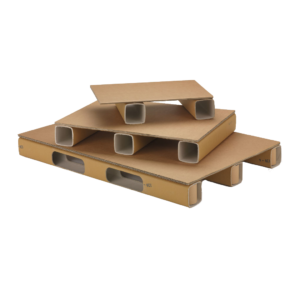
PRESSED WOOD PALLETS
For loads up to 900kg
- Safe: rounded shape that does not tear the stretch film
- Resistant to temperature variations from -65° to +120° C
- Ideal for export: no marking or additional treatment required for shipments to countries subject to the ISPM15 standard
- Environmentally friendly: 80% recycled and recyclable
- Lightweight: twice as light as a traditional wooden pallet
- Interlocking stackable
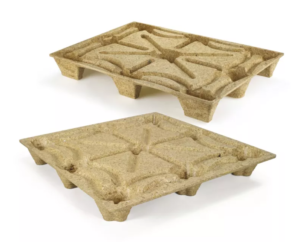
PLASTIC PALLETS
For loads up to 1200kg
- Hygienic and washable: made of synthetic resin, rot-proof
- Practical: maintenance-free
- Robust: constant tare weight, excellent dynamic capacity
- Economical: can also be used as a disposable pallet
- Stackable and rackable (depending on model)
- Suitable for export: complies with the Fao ISPM15 standard
- Waterproof and insensitive to temperature variations
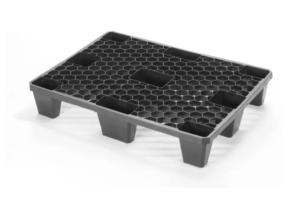
When calculating the type of load the pallets are subjected to, the following distinction must be taken into account:
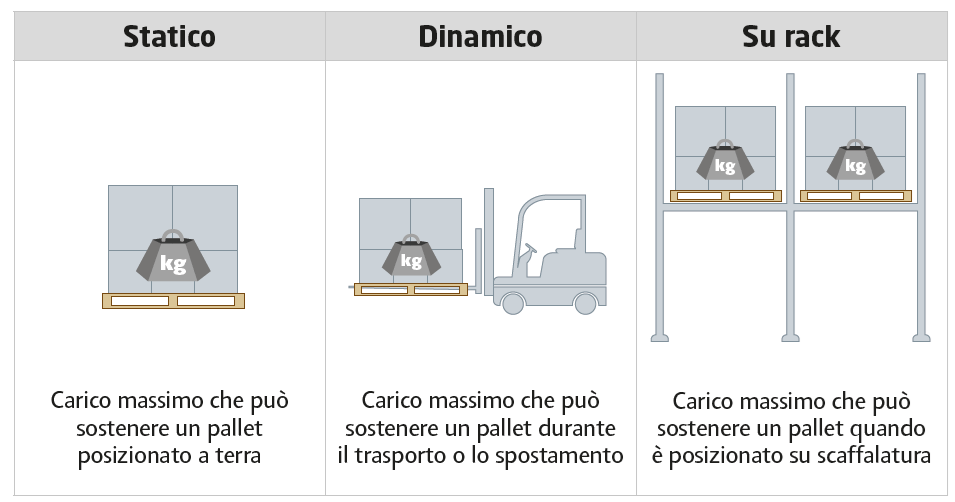
If you need more information to find out which pallet is right for you, also read this guide to choosing a pallet
Professional pallet packaging
Practical tips and main mistakes to avoid
One of the most important things to bear in mind is that, since pallets are used for shipments of several parcels, it is essential to create a structure that guarantees their solidity, ease of transport and safety for the goods and people who have to handle them.
For this reason, first of all, we advise you to identify the most suitable pallet size by calculating the dimensions of what you will have to place on it.
Once you have done this, you should place the boxes or parcels in the most stable and compact way possible. Prefer column or interlocking stacking to create a structure as close to a cube as possible. Avoid placing boxes in a pyramid shape or having the goods protrude from the pallet as this exposes them more to damage during transport.
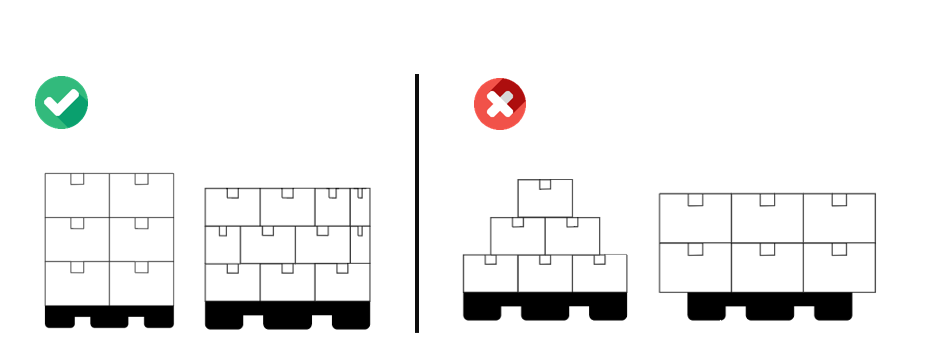
Takecare when protecting the pallet: profiles, lids, bottoms, corners and interlayers will be your best allies.
Discover all the useful accessories for palletising
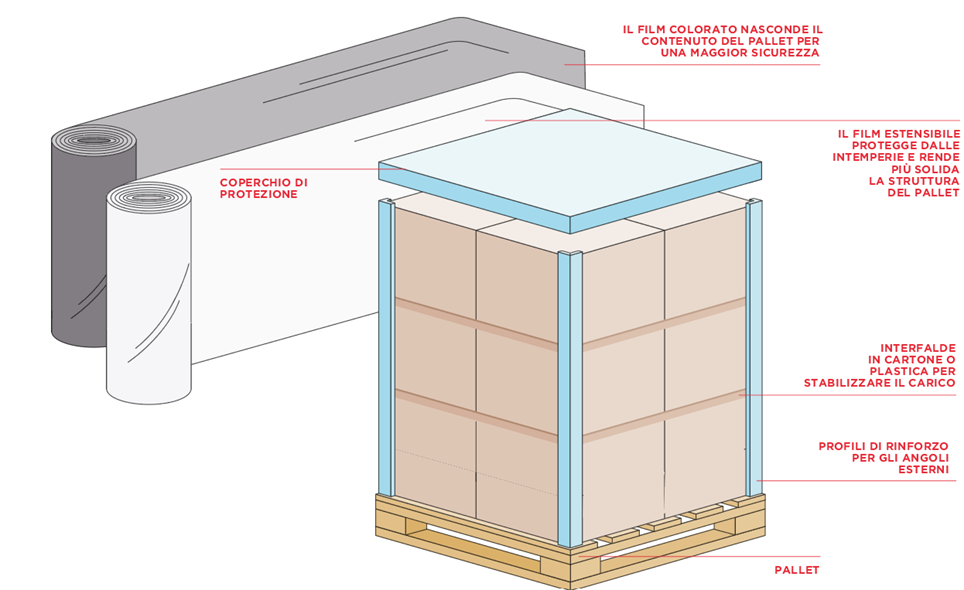
Profiles and ang les protect corners from bumps and scratches during transport and storage of your products. They also prevent deterioration caused by too high a strap clamping force.
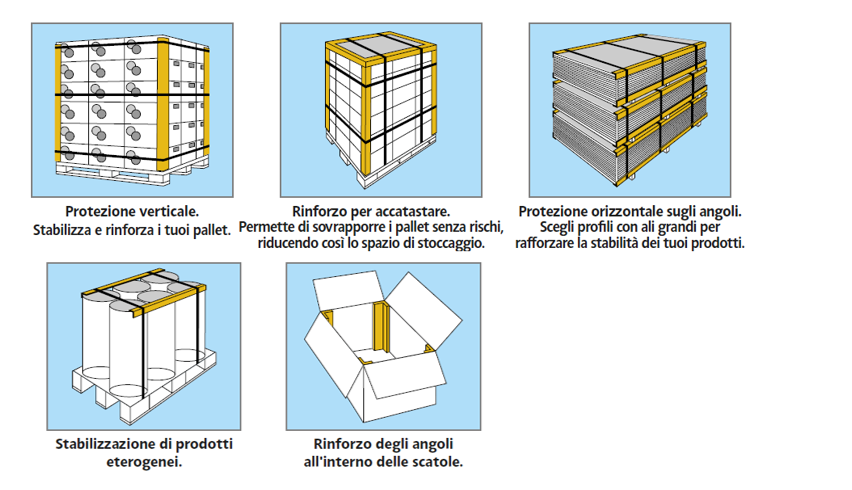
Interleaves improve weight distribution and stability while bottoms and lids make for more homogenous pallets
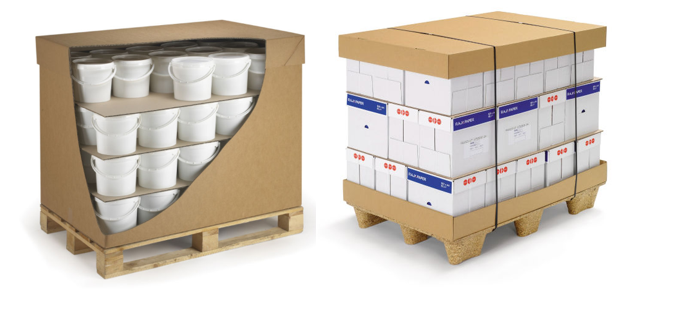
If you transport valuable goods or do not want the contents of your pallet to be visible during transport, you can use coloured stretch film to wrap it.
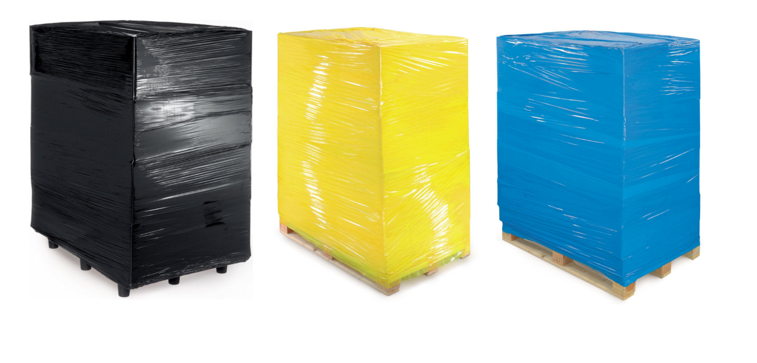
Discover the full range of palletising products !










